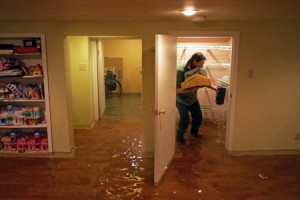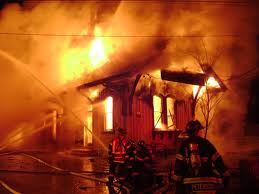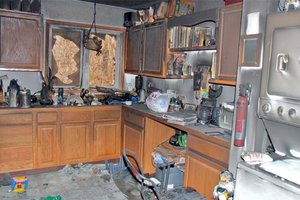Plano Water Restoration: Save Your Home & Health
Plano Water Restoration: Save Your Home & Health
ASSESSING BUILDINGS FOR WATER DAMAGE AND MOLD CONTAMINATION
Posted by asprousemd on April 25, 2013 · Leave a Comment

Dr. Adrienne Sprouse
I am pleased to have Luke Curtis, MD, MS, CIH as our Guest Blogger for April. Luke is a Medical Doctor as well as a Certified Industrial Hygienist, and has assessed more than 1,000 buildings for mold and moisture problems as well as other issues of indoor air quality. He is one of just 10 individuals in the United States that have both a medical degree and industrial hygiene certification.
Documenting water damage.
What should a person do if they suspect that there is a mold or water problem in their house, apartment, school, or workplace? The first step is to identify and document an obvious water problem- such as a leaking pipe, damaged roof, leaky windows, excess moisture in the bathroom, or flooding. Taking photos of the water-damaged parts of the building can be helpful, especially in insurance or legal cases. The cause of the water damage must be repaired.
Many molds grow quickly under wet conditions and can cover large areas within 24 to 72 hours after the water damage occurs. If the water problem is extensive, a professional water damage clean-up specialist should be contacted promptly to minimize damage to your property and to prevent the growth of mold.
Conducting a mold investigation
The first step in assessing water damage or mold growth involves identifying and photographing any obvious mold or water problems. In many cases, investigation by a Certified Industrial Hygienist trained in mold identification and remediation is necessary. I emphasize this special training because mold identification presents many challenges and is often missed by untrained personnel. In the aftermath of Hurricanes Sandy, Irene, Rita, and Katrina, many companies have sprung up claiming to understand the issues of mold contamination, yet they do not follow the methods I will outline here.
The types of testing depend upon the severity of the water or mold problem, health concerns of the residents, and cost concerns. Testing should be more extensive if the water damage covers a large area of the building or if there are serious health concerns of residents, like breathing problems or multiple health complaints that developed after the water damage occurred.
A professional mold investigation involves talking to the residents of the building, recording their observations of the mold or water problems, and recording any health problems they have. The investigator should then walk through the building, make notes, and take photographs of the affected areas if the residents have not already photographed them. After the initial interview and walkthrough, the investigator should then formulate a testing protocol.
Measurements of temperature and humidity
Measurements should be taken of the temperature and relative humidity in the rooms where water damage or mold is suspected or has been identified. Humidity meters can be purchased for under $20 and are a good investment for those concerned about mold and moisture problems. The next step should be examining the walls, ceilings, floors, and other solid surfaces for excess water by using a moisture meter which is easy to use, costs less than $200, and is useful for both building investigators and homeowners. Infrared cameras are used to detect water in hidden areas. They produce a vivid temperature map which indicates wet areas. Fiberoptic devices can also detect moisture in hard-to-reach areas such as the cavities in ceilings, walls, and floors.
Testing for mold spores
The most common means for testing for mold involves collecting air samples and then either observing them immediately under a microscope for total spores counts (living and dead spores), or growing them in a culture for several days to several weeks for viable or living spores. Most mold experts use several methods for collecting mold spores in air.
It is important to collect mold air samples both indoors and outdoors, as an outdoor sample is often very useful for comparison. If the level of a certain mold is high in both indoor and outdoor samples, this would suggest that most of the indoor spores are from outdoor sources. Low outdoor levels of a particular mold (example Cladosporium) and high indoor levels of the same mold suggest there is an indoor source of mold contamination and water intrusion.
In addition to air samples, it is also important to collect samples for molds on surfaces such as walls, carpets, ceilings, furniture, wet wood, or wet drywall. These samples can be collected by using swabs or taking bulk samples of the material (such as water-damaged or mold-contaminated drywall) and then growing these samples in culture for several days on culture plates and then examining them under a microscope. Such bulk mold sampling is critical for testing Stachybotrys, a mold which is not readily airborne and found mostly indoors rather than outdoors.
Testing for mycotoxins
In high concentrations, mycotoxins cause the musty odor associated with mold contamination. Chemicals specific to molds such as aflatoxins, ochratoxins, and trichothecenes can be measured in dust, building materials, or in the air of buildings. To provide a sufficient amount for analysis, this testing requires a gram or more of the affected building material or at least one cubic meter of air obtained after several hours of air sampling.
Indoor areas can also be analyzed for volatile organic chemicals which is another category of chemicals emitted by molds. Positive levels of benzene, hexane, acetone, and other organic chemicals can further document the presence of mold. These samples are then sent to a commercial laboratory that can measure the mycotoxin content.
Testing for mycotoxins both before and after remediation can document the effectiveness of the remediation. If positive levels of mold toxins exist after an attempt at remediation, further remediation is necessary to bring the mycotoxin levels down to zero.
Several companies can detect mold DNA (the genetic material) in dust or air samples. Dust DNA samples can be analyzed for the presence of approximately 100 types of common indoor molds. An ERMI score (Environmental Relative Moldiness Index) has been developed by comparing the concentrations of common indoor molds to the concentrations of common outdoor molds. The ERMI scale has a range of -10 to +20. A level above +5 is considered high. Several scientific studies have found that homes with an ERMI score of + 10 or above are associated with significantly higher levels of asthma.
Dogs trained to sniff mold have been employed by a number of investigators. I, myself, once used a mold-sniffing dog to find heavy mold growth in a hard-to-reach ventilation duct.
Bacteria can grow in conditions similar to mold and can be collected on airborne viable samples or on surfaces, grown in culture, and measured in laboratories. Special testing is available for specific bacteria which cause infection such as Legionella.
A Certified Industrial Hygienist trained to evaluate buildings for mold contamination can be invaluable to helping you determine whether your home, school, workplace, or automobile has a mold problem.
If your home or place of business has been affected by a Plano water leak then you know how unexpected and stressful of a situation this can be. Let the experts at Go Go Green Roofing and Solar help you throughout the entire process of your Plano water restoration needs making it smooth process getting you back in business.
No need to struggle deciding which Plano water restoration services that you will need to make to your business – you have enough to think about. Your insurance will cover the cost of your Plano water restoration repair. We are the Plano water restoration company that knows the complete ins and outs of what needs to be done to completely take care of your Plano water restoration damage. At Go Go Green Roofing and Solar we will take care of the whole insurance process for you. Call us today at (682) 325-2682 for your free evaluation.




